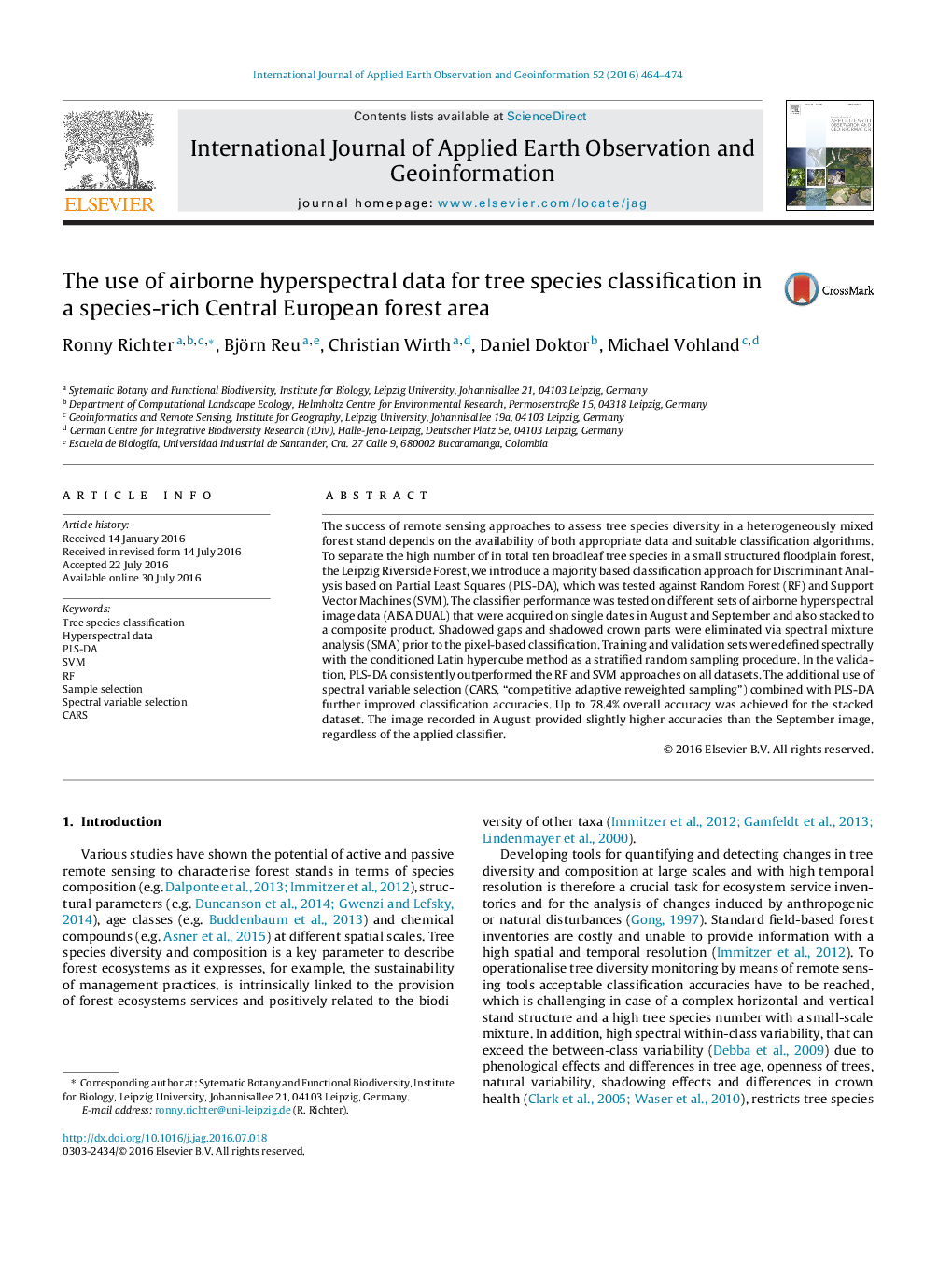| کد مقاله | کد نشریه | سال انتشار | مقاله انگلیسی | نسخه تمام متن |
|---|---|---|---|---|
| 6348506 | 1621805 | 2016 | 11 صفحه PDF | دانلود رایگان |
- RF, SVM, PLS-DA, backward PLS-DA and CARS-PLS-DA were tested for their capability to distinguish spectrally similar tree species.
- Random sample selection strategies were evaluated for classification tasks.
- Best results were obtained with CARS-PLS-DA combined with conditioned Latin Hypercube sampling.
- Wavelength regions spectrally meaningful for tree species classification were analysed with CARS-PLS-DA.
The success of remote sensing approaches to assess tree species diversity in a heterogeneously mixed forest stand depends on the availability of both appropriate data and suitable classification algorithms. To separate the high number of in total ten broadleaf tree species in a small structured floodplain forest, the Leipzig Riverside Forest, we introduce a majority based classification approach for Discriminant Analysis based on Partial Least Squares (PLS-DA), which was tested against Random Forest (RF) and Support Vector Machines (SVM). The classifier performance was tested on different sets of airborne hyperspectral image data (AISA DUAL) that were acquired on single dates in August and September and also stacked to a composite product. Shadowed gaps and shadowed crown parts were eliminated via spectral mixture analysis (SMA) prior to the pixel-based classification. Training and validation sets were defined spectrally with the conditioned Latin hypercube method as a stratified random sampling procedure. In the validation, PLS-DA consistently outperformed the RF and SVM approaches on all datasets. The additional use of spectral variable selection (CARS, “competitive adaptive reweighted sampling”) combined with PLS-DA further improved classification accuracies. Up to 78.4% overall accuracy was achieved for the stacked dataset. The image recorded in August provided slightly higher accuracies than the September image, regardless of the applied classifier.
Journal: International Journal of Applied Earth Observation and Geoinformation - Volume 52, October 2016, Pages 464-474
